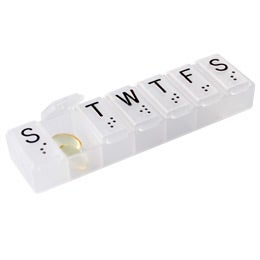"Migraine headaches are excruciatingly painful, exhausting, and scary, but almost worse than the head pain and nausea of migraine disorder is the inevitable sense of isolation- the feeling that you are alone, adrift on a raft amidst a sea of tumultuous waves of pain. Social isolation is common in chronic pain illness, but by learning some valuable coping skills, you can beat the odds."
"Sunday night I had an epic crying session. I wanted out of this body, this cage. I was tired of having to fight to do the smallest tasks, like eating or showering. I didn’t want be sick anymore. I howled and shook with frustration and fear for hours."
"People with migraines often feel isolated. The unpredictable attacks can make it difficult to plan or participate in social functions, family events or fulfill work responsibilities. A 2010 study of 246 adults who suffer from persistent migraines found that family members and friends often don’t understand and are sometimes even skeptical of the extreme discomfort sufferers experience. The study found that those with chronic migraines feel stigmatized more than people with other brain disorders. Migraine sufferers feel more rejected, ridiculed and ostracized by the people around them and the condition worsens the more severe the migraines."
These are excerpts plucked from various sources on the internet regarding migraines and feelings of isolation. This is something I struggle with a lot, especially more as an adult. As a teenager they weren't as frequent, and I would fight through them because I had no interest in being confined to a bed when there were things to do and sports to be played and tests to take. Now with their frequency and severity, it's pretty much impossible for me to just ignore it and go about my day.
I have a hard time with this. It ain't pretty. In the depths of a migraine attack I will phone friends just to hear a voice, just to feel connected. It's basically me crying while they stumble through what to say to me. I've perfected my migraine cry. See, crying hard makes the head hurt worse, so now I cry with hardly any tension. No squinting, no sobbing if I can help it. I let the tears just come, I let my face fall to my feet. In those moments you can't NOT cry. But it hurts so you kind of have to event a less painful way to mourn the situation.
It's hard to have people around on a logical level during a migraine attack. There isn't much I can do--can't jump around or talk a lot, can't really provide entertainment aside from continual vomiting and writhing. But I cannot stress how vital human presence is to me in such a vulnerable state. I'm well aware that it probably doesn't make much sense but with pain and need I don't find sense-making to be a top priority. How many friends have come to sit with me or spend the night during these moments? Not many. I can name two. I don't blame them. It isn't fun. Who wants to see someone else in pain? I'll say it again: it ain't pretty. But human presence...at a time when I feel so out of my body and mind, when I feel disconnected to everything but pain...that human presence reminds me that there is gravity, an Earth, a tether. When the pain gets really bad I feel quite desperate, and that desperation scares me so much. This is also why another person's presence is so important to me. Even if they go in the other room while I lay in bed suffering through it that's fine. It is the shared air that calms me. With someone there I will not be driven to harm myself. I don't know how else to say it.
This feeling of isolation swells and shrinks. It is not permanent, but when it comes it feels quite set in stone. When I am not sick, it hovers somewhere just behind me, waiting. Tiny but there. I know people that suffer from chronic pain, but not many--even less will openly talk about it. This leads me to wonder if I should look into starting a support group, or finding one to join. It is hard to have a foot in both words and to straddle it all--a foot in the actual world and a foot in the world of pain. It would be nice to have others to talk about it with.
Isolation sucks. It hurts. At my core, I am not a lonely person. I kind of feel forced to be. It breaks my heart.


